Floors. Ceilings. Bathroom stall doors. These are just a few of the places you'll find QR codes. In fact, they've become so ever-present that 45% of shoppers used marketing-related QR codes in 2021.
There's no denying the popularity and convenience of the QR code. But, what exactly is it? Why is it so popular? How can you create one for your next marketing campaign?
Keep reading to learn the magic behind QR codes and how to create your own.
QR codes typically look like this:
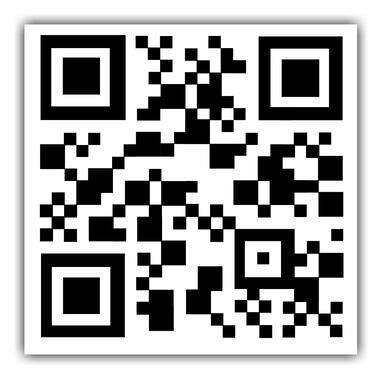
Not every QR code is shaped like a perfect square. Sometimes they have unique patterns, colors, and logos displayed inside. You'll find them in non-digital spaces like direct mail, signage, billboards, and even TV shows where you can scan the code on the screen using your phone.
Both barcodes and QR codes can be scanned using a laser or a smartphone as long as the tool being used has the correct capabilities of reading vertical and horizontal data. Although most smartphones scan QR codes automatically, many won't scan barcodes so easily — you'll need a special app for that.
Does the rise of QR codes mean traditional barcodes are a thing of the past? Of course not. Traditional barcodes are still a common way for businesses to identify consumer packaged goods (CPGs) and manage their product inventory.
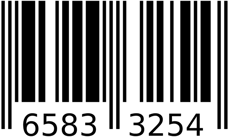
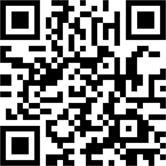
However, there are several differences between barcodes and QR codes — both in their uses and their characteristics. Below are three important differences.
QR Codes Are Shaped Differently
Barcodes are typically rectangular, which requires scanning devices to read the barcode's data horizontally. QR codes are often square-shaped, displaying their data vertically and horizontally.
QR Codes Hold Different Data
QR codes are often used differently than barcodes. Barcodes hold key product information at the point of sale, such as the price and name of the manufacturer. QR codes offer more passive and intangible information, such as location data and URLs to promotions and product landing pages.
QR Codes Hold More Data
Due to a QR code's square shape, it can hold much more data compared to a barcode. QR codes can hold hundreds of times more encrypted characters than a barcode can.
We learned a little bit about how barcodes and QR codes differ, but how exactly do QR codes work?
Let's say a consumer sees a QR code. They can take out their mobile device, download a free QR code scanning app, or simply use their phone's camera, and scan the QR code to gain more information about what they saw.
If you wanted to create, say, a bus stop advertisement promoting your podcast, you could display a QR code on that printed ad that brings people right to your iTunes page when they scan it with their phones. Pretty simple, right?
The QR code creation process is pretty straightforward. Here's how to get started.
Step 1: Choose the type of content you're promoting.
First, you'll need to choose your favorite QR code generator. If you need some ideas, check out our list. For this example, we're going to use qr-code-generator.com.
Select what type of content you want your QR code to show the user after they scan it. You can choose from one of 10 content types, as shown in the screenshot below.
We're going to promote a URL that directs users to our podcast.

Step 2: Enter your data in the form that appears.
Once you select the type of content you're promoting with this QR code, a field or form will appear where you can enter the information that corresponds with your campaign.
If you want your QR code to save contact information, for example, you'll see a set of fields where you can enter your email address, subject line, and associated message.
To save a link to our podcast, we'll simply enter the URL in the field that appears, like so:
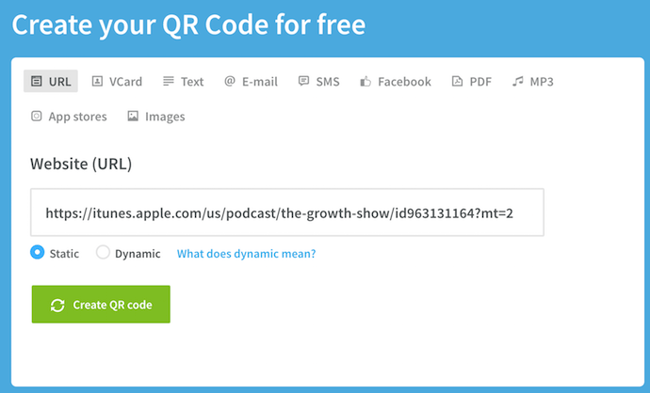
Step 3: Consider downloading a dynamic QR code.
See the option below for "dynamic"? One significant pitfall to making a QR code is that you can't edit the data it contains once you print it. But with dynamic QR codes, you can edit this data.

With a free membership to QR code generators like qr-code-generator.com, you can print a dynamic QR code, scan it, and pull up an editable form where you can modify the data your visitors will receive when they scan the QR code themselves.
Step 4. Customize your QR code.
The fun part of creating QR codes is customizing the design of the codes to fit your brand. Want your code to look like your logo? Go for it. Want it to reflect your website's design scheme? No problem.
Using qr-code-generator.com, we can customize our QR code by clicking the button to the top-right, as shown in the screenshot below. Keep in mind not every QR code maker offers this design option -- depending on the QR code you're looking to generate, you might find some tools limited in their functionality.
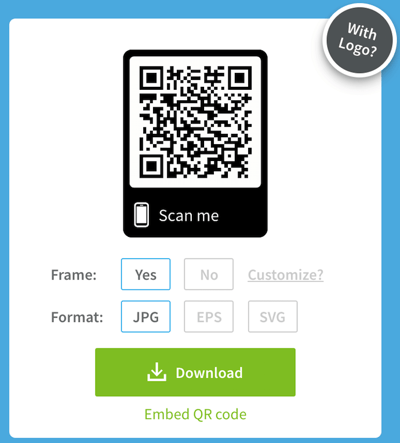
Of course, you can customize your QR code further — adjusting the colors, adding a logo, creating social options, and more.
Keep in mind, however, that some customizations can make it more difficult for QR code scanning apps and smartphone cameras to properly read the code. To cover your bases, it's a good idea to generate two versions of your QR code — one plain version and another with your preferred design.
Speaking of this...
Step 5: Test the QR code to make sure it scans.
Don't forget to check to see if the QR code reads correctly, and be sure to try more than one QR code reader. A good place to start is the free tool Google Goggles, which takes a picture and then tells you what link or item it “reads to.”
Another great free tool is the app QR Code Reader, which automatically takes you to whatever it “reads.” Most smartphones these days include a built-in QR code reader, so you should test to make sure your code is readable there, as well.
Step 6: Share and distribute the QR code.
A QR code won't be able to do its job unless people see it. So make sure you come up with a distribution plan for sharing the code. This could include displaying it in print ads, on clothing, or in physical locations where people can take out their phones to scan it.
Scroll down for more tips on properly displaying a QR code.
Step 7: Track and analyze performance.
Just like any marketing campaign, you should follow up on any collateral or campaigns using QR codes to see whether they're actually working. How much traffic comes from each specific code? Are people scanning your code but not redeeming their offer once they get to the landing page? Or are they not even compelled enough to scan your QR code in the first place?
Knowing the answers to these questions will help you troubleshoot and adjust poorly performing QR codes to more closely mirror those that work well.
I recommend you include a UTM tracking code on your URL so you can better measure performance— this is particularly important if you use closed-loop marketing analytics or if you perform more in-depth reporting on your campaigns.
How to Use QR Codes (And How Not to)
Now that you see how simple the QR code creation process can be, let's talk about some best practices that'll increase the likelihood that your QR code actually gets used.
Display your QR code where it's convenient for people to scan.
Put QR codes in places where scanning them is easy and there's enough time for the consumer to scan the code. While you may often see QR codes on billboards and TV commercials, they're not exactly the most user-friendly locations. It's a safety hazard to entice people to pull out their phones while driving to scan a code, and a 30-second commercial might not be enough time for someone to find their phone and scan the TV.
Instead, think of places where consumers have the time and ability to scan the code. Places with a strong Wi-Fi connection will help, too.
Optimize the QR's destination page for mobile devices.
Mobile-optimize the page to which you're sending people. Consumers will be using their phones when scanning the QR code, so they should arrive at a page with a positive mobile experience.
Include a CTA that prompts people to scan your QR code.
Offer a call-to-action (CTA) with the code — that is to say, tell people what they're supposed to do when they see the code, and what they'll receive if they scan it. Not everyone knows exactly what a QR code is, and those that do won't be motivated to scan it unless they're sure there's something worthwhile on the other side.
Don't limit your QR code to one mobile scanner.
Don't require a special QR code scanner. Your QR code should be app-agnostic so anyone can scan your code with any reader. A lower barrier to entry makes success more likely for you and the user.
Use your QR code to make someone's life easier.
Don't use a QR code just for the sake of using one. For instance, it's common for marketers to think, "How can I bridge the offline experience with the online experience? Uhhh ... QR code!" That's not wrong, but it's not always right, either.
If you have content that makes sense to deliver to a mobile user, and you have an appropriate channel to do it (see use #1 at the beginning of this section), it's more likely your QR code will drive results.
Earlier, we showed you an example of how to create your own QR code, but you don't have to create it from scratch. A QR code generator can speed up the process (and take a lot of math out of it, too.)
There are tons of QR code generators out there. The best ones give you many customizable options for using your QR code, and compatibility with just about all mobile QR code reader apps.
Other things to look for when choosing a QR code generator are whether you can track and analyze performance in real-time and design a code that's unique to your brand.
Below are some of our favorite QR code generators that make custom QR codes quick and easy to create.
1. Kaywa
Kaywa is a simple, no-fuss QR code generator that creates basic codes for coupons, URLs, and contact information. Simply enter your information, choose whether you want a dynamic or static code, and generate it.
Why we like it:
If you're using your QR code as part of a marketing campaign, you can track analytics through Kaywa when you create an account. That way, you'll have the latest data on who engaged with your code, where they engaged, and when.
2. GOQR.me
GOQR.me is a simple QR code generator that works best with short URLs, but it can be used to store text, geolocation, and event data. Simply click on the icon that corresponds to your data and fill in the fields.
Why we like it:
You'll get a live preview of your QR code in real-time which speeds things up if you're adding finishing touches to your marketing campaign. For an additional fee, you can also have your logo added to your QR code by a GOQR.me-affiliated designer for a custom look.
3. Free QR Code Generator by Shopify
QR codes work best when you have something to offer the people who scan them. And chances are, you're probably selling to people who buy products online with their phones every day.
Why we like it:
Shopify makes it easy to create a QR code in just one click. The best part is that you don't have to own a Shopify store to use this free tool.
4. Visualead
Looking for a one-of-a-kind QR code that suits your brand to a "T"? Visualead is the tool we recommend for the job.
Why we like it:
Visual QR codes are popular and can generate more interest in your users than a typical black and white code can. That means you could see more scans and engagement on this type of QR code.
5. The-qrcode-generator.com
The-qrcode-generator.com features a simple UI that lets you create a unique QR code in minutes. Simply add your URL or the information you want to share and your QR code appears instantly.
Why we like it:
If you're creating several QR codes at once, you might find it worthwhile to download the Google Chrome extension for a faster workflow.
6. QR Stuff
As one of the more robust QR code generators, QR Stuff can create codes for just about any type of data you want to share with the world. YouTube videos, Zoom meeting invitations, and even bitcoin information are supported through this tool.
Why we like it:
In just three steps, you'll have a free, customizable QR code that will function properly and look great. Plus, there's no limit to the number of codes you can create.
7. Qr-code-generator.com
We used this QR code generator in our how-to guide above, and for good reason. Qr-code-generator.com is a simple tool that's user-friendly for even the least tech-savvy of us. Simply drop your link into the box, and let the generator do all the work.
Why we like it:
QR-code-generator.com is intuitive. It'll automatically detect the type of URL you've added and produce a QR code in seconds.
8. QR Code Monkey
If the way your QR code looks is important to you, but you don't want to pay extra for a custom design, try QR Code Monkey. Once you add your URL, you can change the color, add a logo, and further customize the pixels in your code at no cost.
Why we like it:
With QR Code Monkey, the design possibilities are virtually limitless. All you need to create a branded QR code is a creative eye and a little patience.
Create Your QR Code Today
Now it's your turn! You've spent enough time scanning QR codes, why not make your own? Follow the steps in this article and use one of the free QR code generators we've recommended to put your business, project, or event out there in the real world.
Editor's note: This post was originally published in January 2021 and has been updated for comprehensiveness.
How to Make a QR Code in 7 Easy Steps was originally posted by Local Sign Company Irvine, Ca. https://goo.gl/4NmUQV https://goo.gl/bQ1zHR http://www.pearltrees.com/anaheimsigns

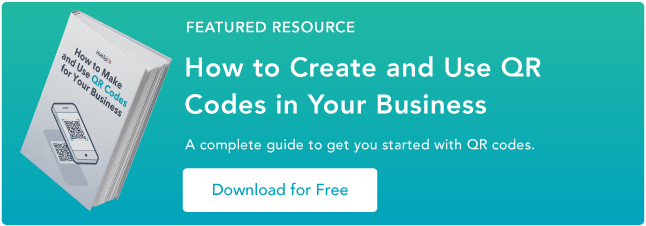
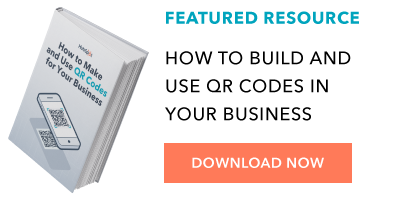
No comments:
Post a Comment